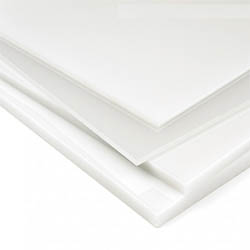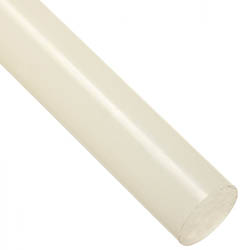PP Sheets & Rods
PP Sheets

Polypropylene PP sheets are versatile and widely used thermoplastic materials known for their exceptional durability, flexibility, and chemical resistance. These sheets are manufactured from polypropylene resin through a heat and pressure process, resulting in a smooth, semi-transparent, and lightweight material. They are prized for their suitability in various applications, including packaging, signage, automotive components, and even medical devices due to their non-toxic nature. Their inherent resistance to moisture, chemicals, and UV rays makes them ideal for outdoor use. Additionally, polypropylene sheets can be easily fabricated through cutting, welding, and forming, making them a favorite choice for DIY projects, industrial manufacturing, and countless other applications.
PP Rods

Polypropylene PP rods are cylindrical, solid structures made from polypropylene, a versatile thermoplastic material. These rods are prized for their exceptional mechanical properties, including high impact resistance, flexibility, and chemical resistance. Polypropylene's lightweight nature and non-toxic composition make these rods ideal for various applications, such as chemical storage, laboratory equipment, and construction. They excel in challenging environments where resistance to corrosion, moisture, and chemical exposure is essential. Their ease of machining and forming also allows for customization and adaptability in various industries. Polypropylene PP rods offer a cost-effective solution for diverse needs, making them a popular choice for engineers, manufacturers, and DIY enthusiasts alike.
Technical Property Chart
|
TYPICAL PROPERTIES of PP |
||||
|
ASTM or UL test |
Property |
Homopolymer |
Co-Polymer |
Flame Retardant |
|
PHYSICAL |
||||
|
D792 |
Density (lb/in³) |
0.033 |
0.033 |
0.035 |
|
(g/cm³) |
0.905 |
0.897 |
0.988 |
|
|
D570 |
Water Absorption, 24 hrs (%) |
<0.01 |
0.01 |
0.02 |
|
MECHANICAL |
||||
|
D638 |
Tensile Strength (psi) |
4,800 |
4,800 |
4,300 |
|
D638 |
Tensile Modulus (psi) |
195,000 |
- |
- |
|
D638 |
Tensile Elongation at Yield (%) |
12 |
23 |
28 |
|
D790 |
Flexural Strength (psi) |
7,000 |
5,400 |
- |
|
D790 |
Flexural Modulus (psi) |
180,000 |
160,000 |
145,000 |
|
D695 |
Compressive Strength (psi) |
7,000 |
6,000 |
- |
|
D695 |
Compressive Modulus (psi) |
- |
- |
- |
|
D785 |
Hardness, Rockwell R |
92 |
80 |
- |
|
D256 |
IZOD Notched Impact (ft-lb/in) |
1.9 |
7.5 |
0.65 |
|
THERMAL |
||||
|
D696 |
Coefficient of Linear Thermal Expansion (x 10-5 in./in./°F) |
6.2 |
6.6 |
- |
|
|
Heat Deflection Temp (°F / °C) |
|
|
|
|
D648 |
at 66 psi at 264 psi |
210 / 99 125 / 52 |
173 / 78 110 / 43 |
106 / 41 57 / 14 |
|
D3418 |
Melting Temperature (°F / °C) |
327 / 164 |
327 / 164 |
327 / 164 |
|
- |
Max Operating Temp (°F / °C) |
180 / 82 |
170 / 77 |
180 / 82 |
|
|
Thermal Conductivity |
|
|
|
|
C177 |
(BTU-in/ft²-hr-°F) (x 10-4 cal/cm-sec-°C) |
0.76-0.81 2.6-2.8 |
- - |
- - |
|
UL94 |
Flammability Rating |
HB |
n.r. |
V-O |
|
ELECTRICAL |
||||
|
D149 |
Dielectric Strength (V/mil) short time, 1/8" thick |
500-660 |
475 |
500-650 |
|
D150 |
Dielectric Constant at 1 kHz |
2.25 |
2.2-2.36 |
2.3 |
|
D150 |
Dissipation Factor at 1 kHz |
0.0005-0.0018 |
0.0017 |
- |
|
D257 |
Volume Resistivity (ohm-cm) at 50% RH |
8.5 x 1014 |
2 x 1016 |
1015 |
|
D495 |
Arc Resistance (sec) |
160 |
100 |
- |